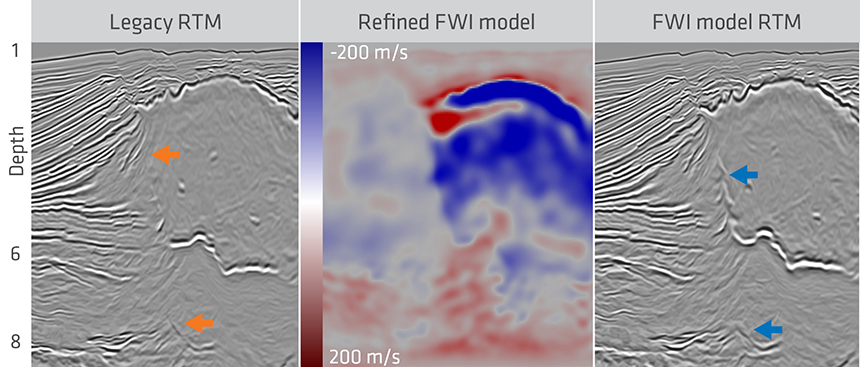More than 70 attendees from academia, oil companies, and contractors saw 28 presentations on topics ranging from Full Waveform Inversion case studies and theoretical discussions on FWI’s future, to Monte Carlo simulations and Bayesian analysis for understanding velocity model uncertainty.
PGS was represented on the organizing committee by Tony Martin, Imaging Principal Geophysicist, who wrote and presented the four PGS papers and chaired two of the technical sessions.
Cycle-skipping in FWI
The first presentation showcased work on the use of a robust norm to mitigating cycle-skipping in FWI. The presentation included a field test example from Brazil, highlighting the accuracy of the resulting model, and the opportunity it offers to reduce velocity model building uncertainty and turnaround.
Use of a Robust Norm in Reducing FWI Uncertainty in the Presence of Cycle Skipping
Automation and Model Uncertainty
The second presentation was part of the automation and model uncertainty session and highlighted PGS’ Monte Carlo simulation approach to understanding velocity model and seismic imaging uncertainty. It also showcased work on reverse engineering the workflows to deliver automated depth imaging velocity models.
Sample Size Automation in a Pseudo-random Model Uncertainty Workflow
Absolute Acoustic Impedance using FWI
Work on absolute acoustic impedance using FWI models was the focus of the third presentation. The impedance inversion results show a benefit of using FWI models for the low-frequency component when generating absolute acoustic impedance in areas with sparse or no well control. Whilst the work did show a benefit from using an FWI model, it was demonstrated that no advantage can be seen when using higher frequency data for the creation of the FWI model for absolute properties.
Integrating FWI Models and Broadband Data for Elastic Property Generation, What is Appropriate?
Better Imaging Below Salt
The final presentation of the workshop showcased a PGS project that utilized ultra-long offset rich-azimuth data from the Gulf of Mexico, along with the PGS FWI velocity kernel. PGS FWI delivered accurate long-wavelength updates in and beneath a complex and thick salt section, which result in improved intra- and pre-salt imaging, thus reducing image uncertainty.
Deep Updates - Challenges and Solutions for FWI
All four presentations were well received, with particular audience interest being shown in the robust norm implementation, the model uncertainty simulation, and the model building in pre-salt Brazil, all of which have been followed up after the workshop finished.

Contact a PGS expert
If you have questions related to our business please send us an email.